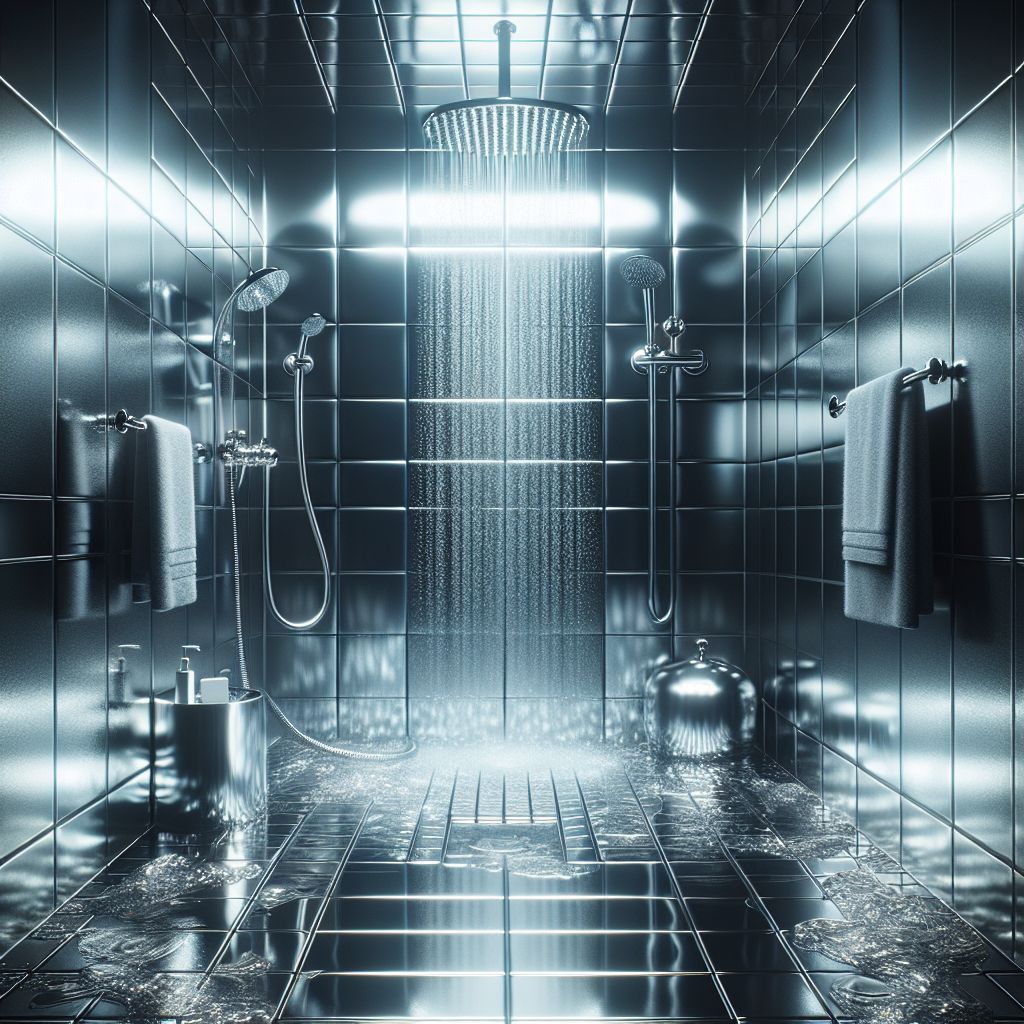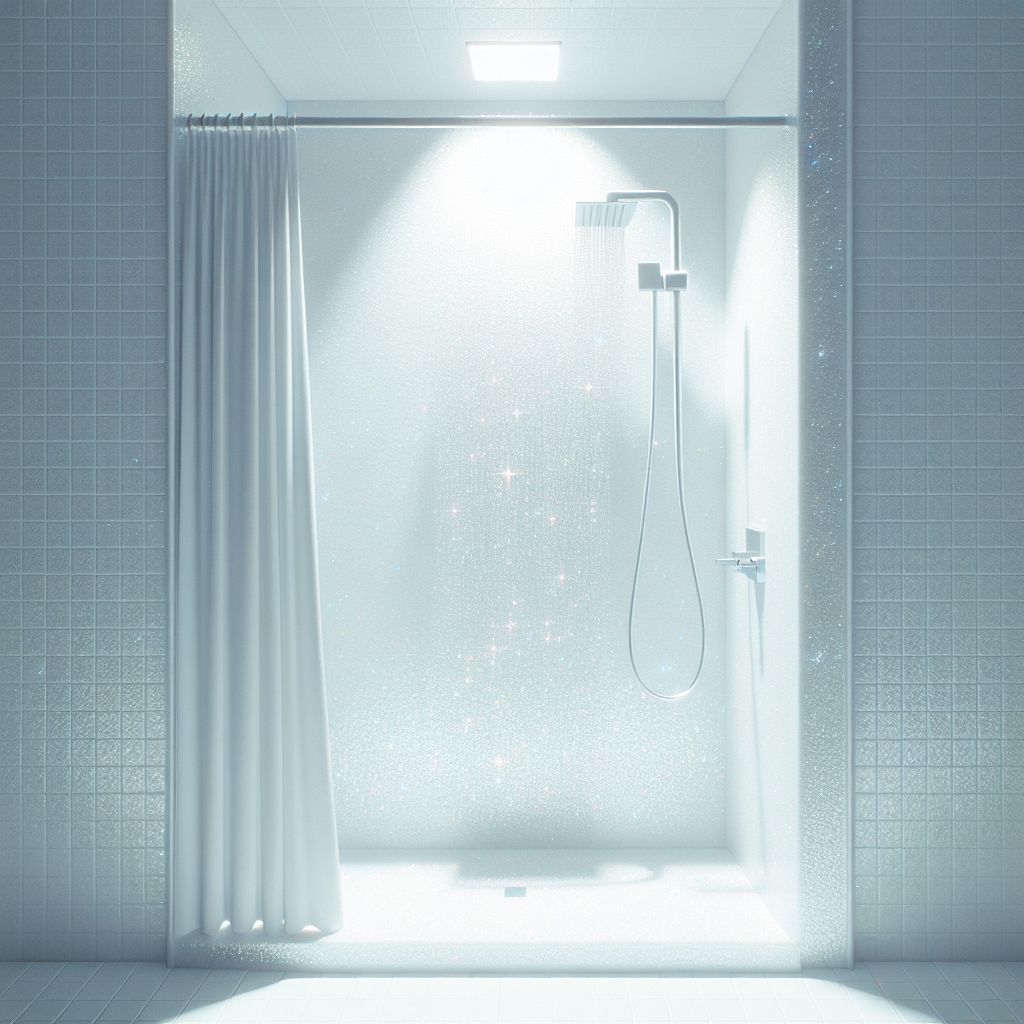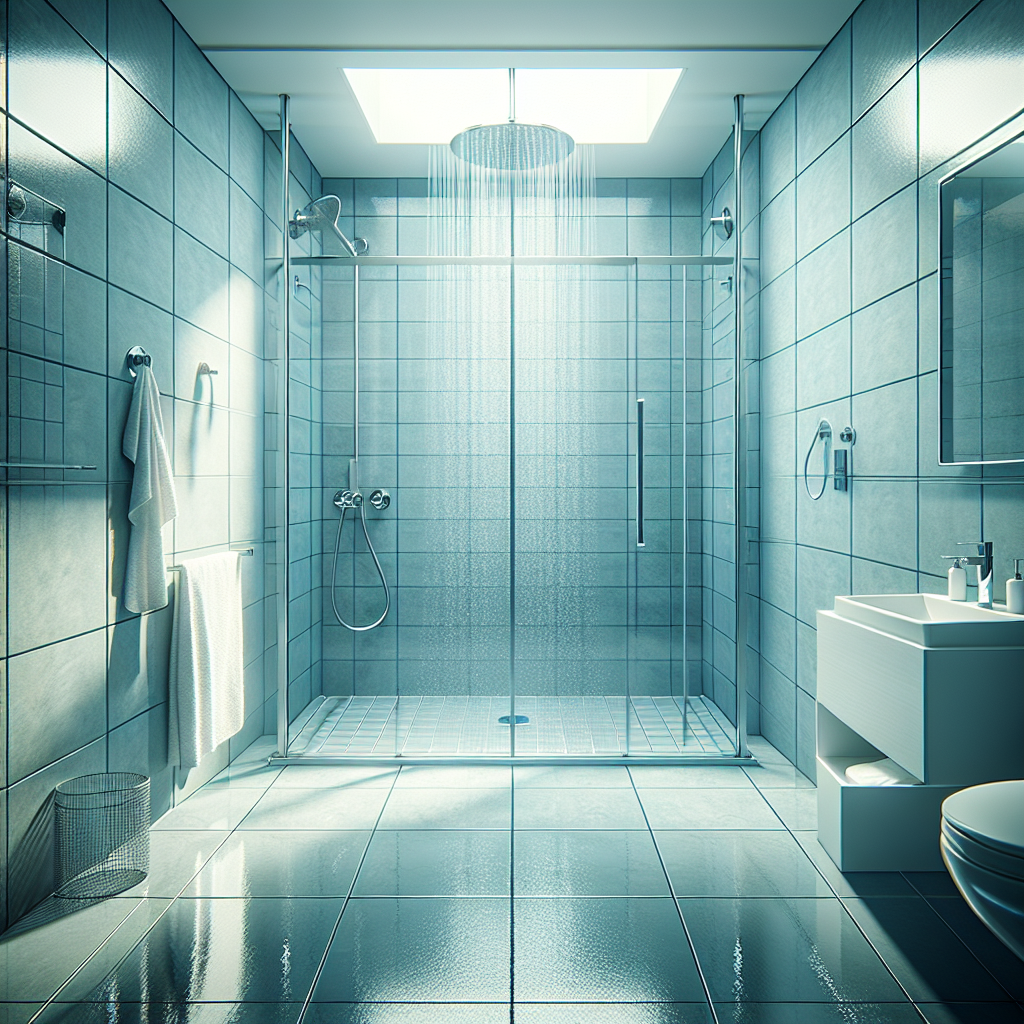
Key Takeaways
-
Porcelain showers offer classic elegance and are highly water-resistant but can be heavy and need professional installation.
-
Fiberglass is a lightweight and cost-effective option that’s easy to install, but it may not be as durable in the long run.
-
Cast iron showers are incredibly durable and have a timeless appeal, yet they are heavy and require strong support structures.
-
Steel showers are sturdy and offer a modern look but can be prone to scratches and may feel colder to the touch.
-
Understanding the material your shower is made of can help you make informed maintenance decisions and choose the right upgrades.
Demystifying Shower Materials
When it comes to home improvement, the bathroom is a sanctuary that deserves attention. And at the heart of every bathroom lies the shower—a place where we rejuvenate and refresh. But have you ever paused to consider what your shower is actually made of? It’s not just a matter of aesthetics; the material of your shower impacts everything from durability to daily maintenance.
Why Your Shower’s Composition Matters
First off, why should you care about the material of your shower? Well, because it affects how long your shower will last, how easy it is to clean, and how it complements the rest of your bathroom’s design. A mismatched or low-quality material can mean more repairs, a higher chance of water damage, and a less enjoyable shower experience.
If you’re a DIY enthusiast looking to upgrade or refinish your shower, knowing the ins and outs of shower materials is critical. You’ll need to know what your shower is made of in order to work with it correctly.
The Impact of Materials on Durability and Design
Let’s talk durability and design. Some materials, like porcelain, can last a lifetime with proper care. Others, like fiberglass, might need more attention over the years. Then there’s the design aspect. Your shower isn’t just a utility—it’s a centerpiece that should reflect your style and complement your bathroom’s overall vibe.

Porcelain Showers Uncovered
Porcelain has been a go-to material for showers for decades, and for good reason. Its glossy finish and resistance to water make it a smart choice for any bathroom. But there’s more to porcelain than meets the eye.
The Classic Elegance of Porcelain
Porcelain tiles are a fusion of clay and other natural materials, fired at high temperatures to create a hard, dense surface. This process gives porcelain its impressive durability and non-porous nature, making it ideal for wet environments like showers.
What’s more, porcelain comes in an array of designs, colors, and sizes. Whether you’re going for a sleek, modern look or a traditional vibe, porcelain can accommodate your vision. It’s also resistant to scratches and fading, so it’ll keep looking great year after year.
Identifying Porcelain Showers
To identify if a shower is made of porcelain tiles, look for smooth glazed surfaces with consistent textures, clean and straight edges, and durable properties such as hardness and resistance to water absorption. Additionally, check for narrow grout lines and consider consulting a professional if uncertain.
Many showers use porcelain tiles, so if your shower is tiled, it’s probably porcelain.
Caring for Your Porcelain Shower
Maintaining a porcelain shower is straightforward. Regular cleaning with non-abrasive products will keep it sparkling. However, because porcelain is heavy, the installation process isn’t a DIY project for beginners. It requires a sturdy backing and precise placement, so you might want to call in a professional.
-
Use gentle cleaners to avoid scratching the porcelain surface.
-
Seal the grout lines regularly to prevent moisture penetration and mildew growth.
-
Avoid using steel wool or other harsh scrubbing tools that can damage the finish.
Remember, while porcelain is tough, it’s not indestructible. Dropping heavy objects can crack tiles, so handle with care during use.

Cast Iron Showers
Cast iron showers bring a sense of timeless elegance to any bathroom. This material has been a staple in homes for centuries due to its durability and classic look. But what exactly is cast iron, and how can you tell if your shower is made from it?
Identifying Cast Iron in Your Shower
Cast iron is exactly what it sounds like: iron that has been cast in a mold to create your bathtub or shower base. It’s incredibly sturdy and often coated with a layer of porcelain enamel, giving it a smooth and attractive finish. You can identify a cast iron shower by its substantial weight and the characteristic sound it makes when you tap on it—a solid, dull thud as opposed to the hollow sound of lighter materials.
Caring for Your Cast Iron Shower
Maintaining a cast iron shower requires specific care to preserve its durability and classic look. Begin by routinely cleaning the shower walls and floor with a mild detergent or non-abrasive cleaner, using a soft sponge or cloth to remove dirt and soap residue. Avoid harsh cleaners or abrasive tools that could damage the enameled surface. After cleaning, thoroughly rinse the shower to remove any cleaning agents. To prevent water spots and mineral buildup, dry the cast iron surfaces after each use with a clean, dry cloth or towel. Periodically applying a wax or enamel-safe polish can protect the surface and restore its shine. Lastly, ensure proper bathroom ventilation to prevent moisture accumulation and minimize the risk of rust or corrosion. With consistent care, your cast iron shower will maintain its charm and functionality for years to come.

Steel Showers
Steel showers are a less common but equally viable option for your bathroom. They’re typically made of a thin layer of stainless steel over a core of material like fiberglass or plastic. This combination gives you the strength of steel with the lighter weight of other materials.
They are lightweight, durable, and resistant to rust and corrosion. Steel showers are known for their sleek appearance and affordability.
Identifying Steel in Your Shower
A steel shower has a distinctive metallic sound when tapped and is magnetic, unlike fiberglass or acrylic. It’s also cooler to the touch than other materials. While it can be mistaken for cast iron due to its similar appearance, steel is considerably lighter, making it easier to handle during DIY installations.
-
Look for the metallic sheen and feel the cooler temperature of the surface.
-
Use a magnet to check if it’s steel—magnets will stick to steel but not to fiberglass or acrylic.
-
Consider the weight; steel is lighter than cast iron but heavier than fiberglass.
Caring for Your Steel Shower
Maintaining a steel shower involves simple but essential care routines to uphold its appearance and longevity. Begin by regularly cleaning the shower walls and floor with a mild detergent or non-abrasive cleaner, using a soft sponge or cloth to remove dirt and soap scum. Avoid harsh cleaners or abrasive tools that can scratch the steel surface. After cleaning, thoroughly rinse the shower to remove any cleaning residue. To prevent water spots and mineral buildup, wipe the steel surfaces dry after each use with a clean cloth or towel. Periodically apply a stainless steel cleaner or polish to preserve its shine and protect against corrosion. Additionally, ensure proper bathroom ventilation to minimize moisture and prevent mold or mildew growth. With consistent care, your steel shower will maintain its quality for years to come.
Steel showers might be a perfect match for those who appreciate a sleek, industrial aesthetic and are looking for a sturdy yet lighter alternative to cast iron.

Fiberglass Showers
Fiberglass showers are favored for their lightweight nature and simple installation, which saves both time and money for manufacturers and homeowners alike. They boast durability, resisting chips, cracks, and stains, requiring minimal maintenance. Furthermore, their diverse range of styles and designs caters to various tastes and budgets, enhancing their popularity.
Identifying Fiberglass Showers
Identifying whether a shower is made of fiberglass involves observing several key characteristics. Firstly, fiberglass showers typically exhibit a smooth, glossy surface with a slight texture to the touch. This surface often lacks the visible seams or grout lines found in tile showers. Secondly, fiberglass is notably lightweight compared to materials like tile or stone, making the entire unit easier to lift or move. When gently pressed, fiberglass walls may exhibit some flexibility. Additionally, tapping on the walls of the shower produces a hollow, somewhat plastic-like sound characteristic of fiberglass. If you’re still not sure if your shower is fiberglass, consult the manufacturer’s documentation or seek professional advice to get clarity on the shower’s composition.
Caring for Your Fiberglass Shower
Caring for a fiberglass shower involves several simple steps to maintain its cleanliness and longevity. Start by regularly wiping down the shower walls and floor with a mild detergent or non-abrasive cleaner and a soft sponge or cloth to remove soap scum, dirt, and grime. Avoid abrasive cleaners or scouring pads, as they can scratch the fiberglass surface. For tougher stains, you can use a mixture of baking soda and water or a specialized fiberglass cleaner. Rinse the shower thoroughly after cleaning to remove any residue.
To prevent mold and mildew growth, ensure proper ventilation in the bathroom and consider using a squeegee to remove excess water after each use. Periodically apply a wax or polish specifically formulated for fiberglass surfaces to maintain the shine and protect against wear and tear. Regular maintenance will keep your fiberglass shower looking clean and pristine for years to come.

Frequently Asked Questions
You’ve got questions, and I’ve got answers. Here’s the lowdown on some of the most common queries about shower materials.
Can I repaint or refinish my shower regardless of material?
It depends on the material. Porcelain and cast iron showers with a porcelain enamel can be refinished, though it’s a task best left to professionals to ensure a smooth, durable finish. Fiberglass and acrylic showers can also be repainted, but they require specific types of paint and preparation to ensure the paint adheres properly. Steel showers, on the other hand, are not typically repainted due to their material nature.
How do I prevent mold and mildew from damaging my shower?
Mold and mildew thrive in moist environments, so the key to prevention is keeping your shower dry and well-ventilated. After each use, squeegee the walls and floor to remove excess water. Regular cleaning with a mildew-resistant cleaner and ensuring your bathroom has good airflow will also help keep mold at bay.
Are there health concerns associated with different shower materials?
Most modern shower materials are safe and designed to be non-toxic. However, older materials or poorly maintained showers may expose you to lead (in old cast iron or steel) or mold and mildew, which can have health implications. Always ensure your shower is well-maintained and consult with professionals if you’re dealing with older materials.
What is the environmental impact of each shower material?
Each material has a different environmental footprint. Porcelain and cast iron are long-lasting and can sometimes be recycled, but their production is energy-intensive. Fiberglass and acrylic are less durable and are made from non-renewable petroleum products, which may not be as eco-friendly. Steel can be recycled, but like porcelain and cast iron, its production requires significant energy.



